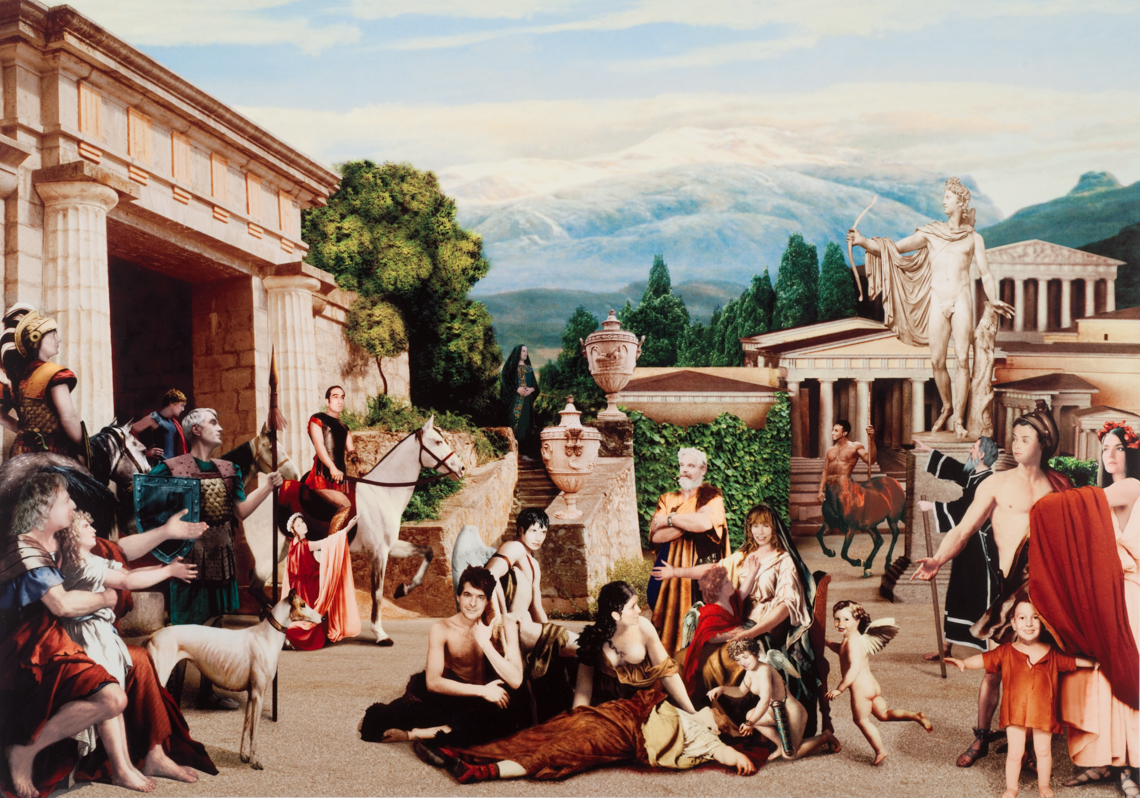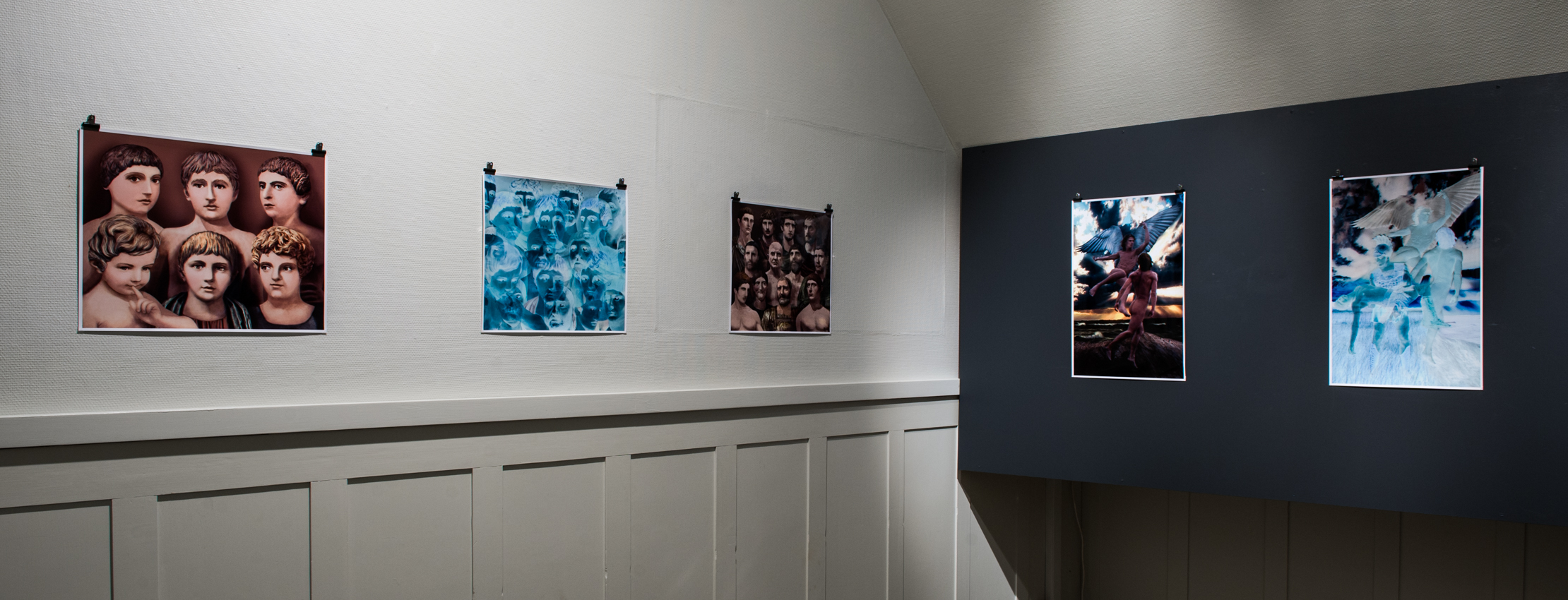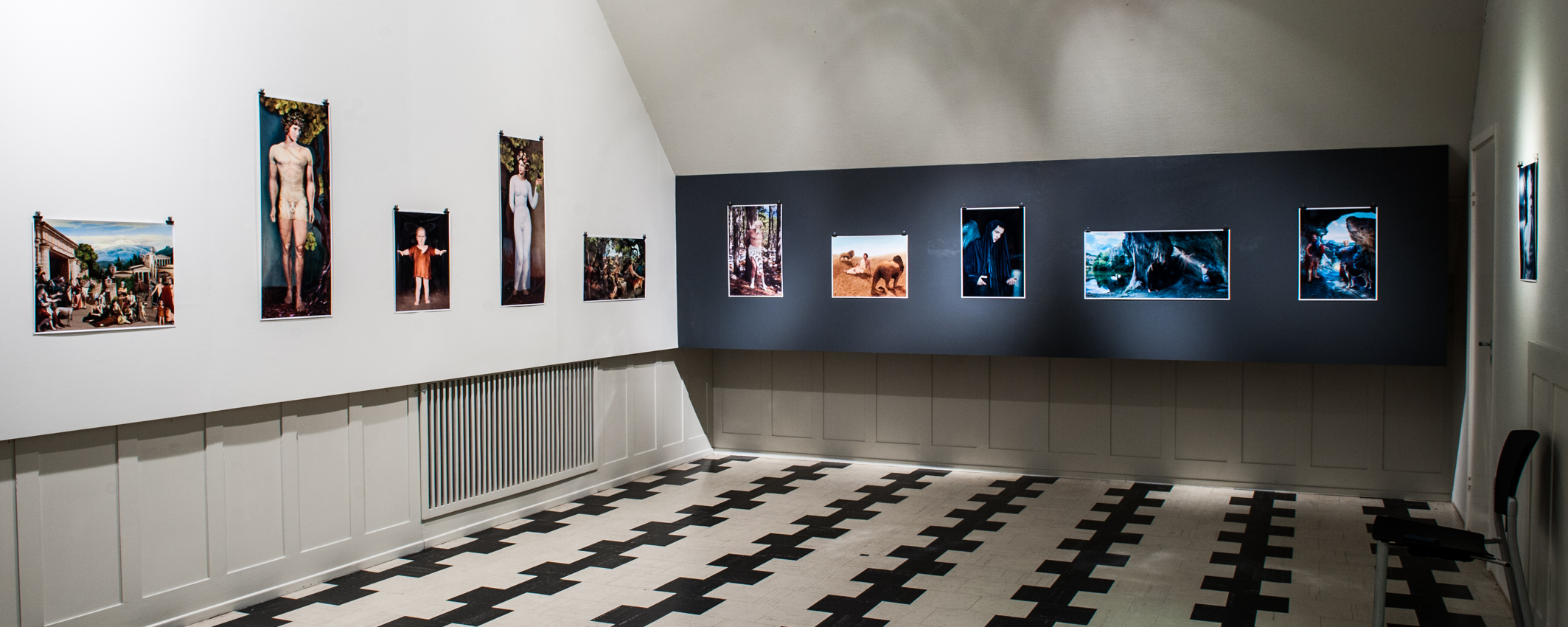The subject matters of Ibsen’s play manifest themselves in Tobreluts’ classical and Christian motifs, in their anachronistic temporality and in their experimental form. Her anachronism conflates past, present and future, her many constellations of complementary pairs and triptychs parallel the dualities and the third empire of Ibsen’s drama, and her digital manipulation comments upon and challenges the traditional artistic media of painting and photo in the way Ibsen’s play offers imaginative representations of his sources.
Ibsen presents a historical drama that attends to the inner life and the spirit of the time in both the 4th century Roman Empire and the 19th century Europe. Tobreluts visual art meditates upon Ibsen’s play and our own time: Ideological clashes belong to today’s society, secularisation and religion are still at odds, the autonomy of arts are under constant pressure. Tobreluts’ anachronistic features reveal the temporal complexity of history, modernity and future, just as the surrealist tendency suggests strife for reconciliation of inner life and social order when life appears absurd. Her highly manipulated visions of historical settings and works of art hint of renewal, falsification and denial of history. Rontgen-like images indicate new types of technology for research into history, but also today’s surgical state supervision of the individual. Like Ibsen’s and Tobreluts’ time, our time is also a time of change.
Tobreluts’ fascinating images in Emperor and Galilean revive and illuminate Ibsen’s great play and reflect upon the world drama of today.
Ruben Moi, University of Tromsø



